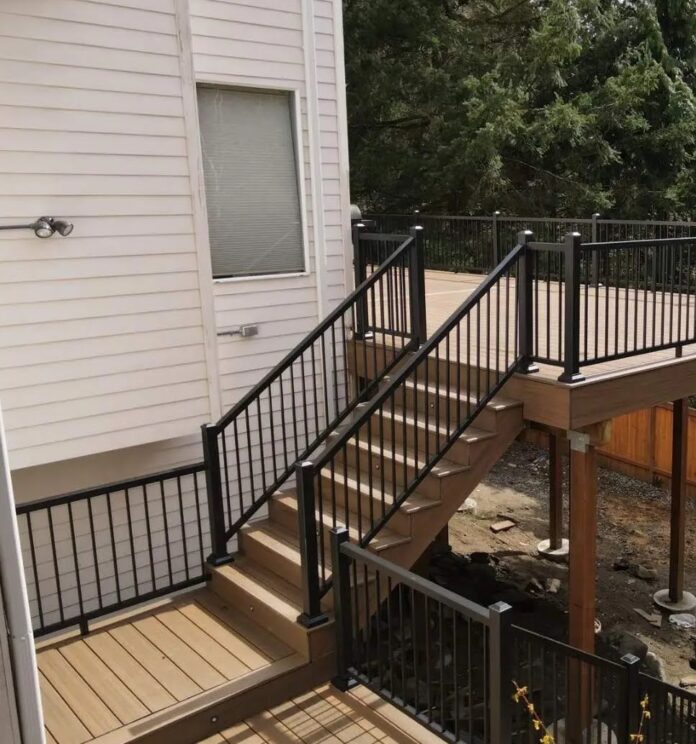Designing a custom deck is an exciting project that can enhance your outdoor living space and create a functional area for relaxation, entertainment, and enjoyment. Whether you’re starting from scratch or upgrading an existing deck, careful planning and attention to detail are key to achieving your dream outdoor retreat. Here are essential tips to consider for designing and installing a custom deck that suits your lifestyle and complements your home.
1. Assessing Your Needs and Goals
Before diving into the design process, clarify your objectives and how you intend to use your deck.
Tips:
- Functionality: Determine the primary use of your deck—whether it’s for dining, lounging, hosting gatherings, or a combination of activities.
- Space Requirements: Consider the size and layout needed to accommodate furniture, appliances (e.g., grill), and circulation space comfortably.
- Aesthetic Preferences: Define your style preferences, such as materials, colors, and architectural features, to align with your home’s exterior and landscape.
2. Planning the Deck Layout
Careful planning of the deck layout ensures optimal use of space and functionality.
Tips:
- Traffic Flow: Design pathways and seating areas to facilitate easy movement and access to different parts of the deck.
- Zone Designation: Create distinct zones for different activities, such as cooking, dining, and relaxation, to maximize usability and comfort.
- Safety Considerations: Incorporate safety features like railings, lighting, and non-slip surfaces to enhance usability and prevent accidents.
3. Choosing the Right Materials
Selecting quality materials is crucial for durability, maintenance, and aesthetic appeal of your custom deck.
Tips:
- Wood Options: Choose from a variety of wood species (e.g., cedar, redwood, treated lumber) known for their natural beauty and strength. Consider the maintenance requirements and longevity of each option.
- Composite Decking: Opt for composite decking for low-maintenance durability, resistance to rot, insects, and fading, and a wide range of color and texture options.
- Alternative Materials: Explore alternative materials like PVC or aluminum for decking boards and railings, offering durability and minimal maintenance.
4. Incorporating Design Elements
Enhance the visual appeal and functionality of your deck by incorporating thoughtful design elements.
Tips:
- Built-in Seating: Integrate built-in benches or seating areas to maximize space and provide additional seating options.
- Outdoor Kitchen or Grill Area: Designate space for an outdoor kitchen or grill setup with countertops, storage, and adequate ventilation.
- Shade Structures: Include pergolas, awnings, or umbrellas for shade and protection from the sun, enhancing comfort during hot days.
- Lighting: Plan for ambient, task, and accent lighting to extend deck usability into the evening hours and create a cozy atmosphere.
5. Considering Environmental Factors
Account for environmental factors such as sun exposure, wind patterns, and landscaping when designing your deck.
Tips:
- Orientation: Position seating areas and shade structures to take advantage of natural shade and minimize direct sunlight during peak hours.
- Privacy: Incorporate privacy screens, planters, or landscaping elements to create a secluded and intimate outdoor space.
- Wind Protection: Install windbreaks like trellises or glass panels to shield your deck from strong winds without compromising airflow.
6. Budgeting and Cost Management
Set a realistic budget and prioritize features that align with your financial resources and long-term investment goals.
Tips:
- Material Costs: Research and compare costs of decking materials, labor, and additional features to stay within budget constraints.
- Phased Construction: Consider phased construction if budget constraints limit immediate implementation of all desired features. Plan for future expansions or additions as finances allow.
7. Obtaining Necessary Permits and Approvals
Ensure compliance with local building codes and regulations by obtaining required permits and approvals before starting construction.
Tips:
- Permit Requirements: Research local building codes regarding deck construction, setbacks, height restrictions, and required inspections.
- Professional Assistance: Consult with a licensed contractor or architect to prepare permit drawings and documentation for submission to local authorities.
8. Hiring a Qualified Contractor
Select a reputable contractor with experience in custom deck installation to ensure quality craftsmanship and adherence to design specifications.
Tips:
- References and Reviews: Seek recommendations from trusted sources and review contractor portfolios, customer testimonials, and references.
- Contract Agreement: Sign a detailed contract outlining project scope, timeline, materials, costs, and warranty information to avoid misunderstandings.
9. Maintenance and Care
Implement a regular maintenance schedule to preserve the beauty and longevity of your custom deck.
Tips:
- Cleaning: Regularly clean debris and dirt from the deck surface, gaps between boards, and underneath furniture to prevent mold, mildew, and stains.
- Sealing and Staining: Apply sealant or stain every few years to protect wood decks from moisture, UV rays, and weathering. Follow manufacturer recommendations for application and drying times.
- Inspections: Conduct annual inspections for signs of wear, loose fasteners, or structural issues. Address any repairs promptly to prevent further damage.
10. Enjoying Your Outdoor Oasis
Once your custom deck is complete, take time to enjoy and personalize your outdoor oasis with furnishings, decorations, and plants.
Tips:
- Furniture Selection: Choose outdoor furniture that suits your lifestyle and complements your deck’s design theme.
- Decorative Accents: Add personal touches with cushions, rugs, potted plants, and decorative lighting to create a welcoming and inviting atmosphere.
- Seasonal Adjustments: Modify your deck layout and decor seasonally to maximize comfort and enjoyment throughout the year.
Conclusion
Designing and installing a custom deck requires careful planning, creativity, and attention to detail. By assessing your needs, selecting appropriate materials, and incorporating functional and aesthetic elements, you can create a personalized outdoor space that enhances your home’s value and your quality of life. Prioritize safety, environmental considerations, and budget management throughout the design and construction process. With the guidance of qualified professionals and a commitment to maintenance, your dream deck can become a cherished extension of your home for years to come.










